This page is a free-shared lesson plan archive for teaching all educational subjects within the context and theme of “Nature”. It is purposed for use in community education environments, homeschool environments, traditional schooling environments, or as a supplemental and fun addition to any education program. As part of the complete Education for Life Program, this lesson plan is specifically designed to work in conjunction with the other components: Foundations of Teaching, Curriculum, Teaching Strategies, Learning Tools and Toys, Evaluation Model, and The Ultimate Classroom. If you’d like to learn how all these components work together, click here. Click here for the specifics focused on just using the lesson plans:
ARTS AND TRADES
CLICK HERE FOR THE COMPLETE SUBJECT OUTLINE FOR ARTS & TRADES
 | TEACHING ARTS AND TRADES WITHIN THE CONTEXT OF NATURE |
 | The Arts- Go outside (to a forest or a field, for example) and collect some items in nature. Create an art piece* with the items you have collected.
- Go on a mini-excursion in nature and take photographs* of things you find beautiful (for example: animals, plants, scenery, rocks). Choose five+ of your favorite photos and present a showcase* of them to others.
- Go into a natural setting you find inspiring and paint a picture* of it.
- Go on an excursion in nature and collect some items in nature. Make detailed sketches* of five items and then do some research on these items to create descriptions to go with your sketches, with the aim of celebrating nature and/or raising awareness about environmental issues.
- Go on an excursion in nature, paying attention to all the sounds you hear and making note of them. Based on the sounds you note, create a song* (with or without lyrics) using your instrument(s) of choice. Share this song with others, either in person or electronically.
- Go into nature and/or look online for ideas for nature themed items. and find some inspiration for making a quilt* or piece of embroidery. Plan your design and then make the piece.
- After doing some brainstorming in a natural setting, create an interactive street theater piece* celebrating nature and helping to raise awareness about what we can do about environmental problems. Then create a flyer with more information, which can be distributed during or after your performance. Perform* this piece in at least one public setting.
|
 | Trades- Make a bird or butterfly feeder* using sticks and other natural items outside or inside of your home (look online for ideas and request the assistance of an adult). Place the feeder outside of your place (or, with the permission of a friend or relative, their place). Watch to see and record* the variety of creatures that come to eat there.
- Do some research online about how to make your own planter pots using items you find around the house (e.g. with old bottles or plastic containers). Bring nature into your home by growing a plant in your pot (from seed or seedlings). Take digital photos to document* the plant’s growth.
- With the supervision of an adult, create a birdhouse or nest box out of wood. Place it outside of your place of residence (or, with the permission of a friend or relative, their place). Periodically check to see if the birdhouse is inhabited, and if so, by whom.*
- Make note of 10+ of the items you can find in nature in your area, and then research natural products that can be made using those items (e.g. air fresheners, tools, decorations, etc). Create 3+ of these products* and share them with others as gifts.
- Create a large structure in which multiple types of insects can live and/or overwinter, also known as a bug hotel, using wood and other materials (e.g.http://tcpermaculture.blogspot.ch/2011/11/permaculture-projects-structures-for.html). Place it outside of your place (or, with the permission of a friend or relative, their place). Check at least once a month to see if any insects are inhabiting your structure, and take photos to document these inhabitants. When there are enough inhabitants, invite groups of local children to come visit the bug home and explain how it works and who is living there.*
- Research the link between Feng Shui design concepts and nature. Then create a blog or presentation* about what you have found, including photos of buildings (from the Internet or which you have taken yourself) as examples.
- Research tiny homes, tree houses, and other modes of living that bring one closer to nature and are more eco-friendly. Choose the type that you find most appealing and create basic architectural renderings* (with or without use of software) for a design for one you would like to live inmost. If possible, build your piece or sell the design to someone who will build it as a model, and invite others to visit it if possible.
|
| CLICK HERE TO EMAIL US IF YOU HAVE AN IDEA TO ADD TO THIS SECTION |
* Please note that anything with an asterisk is just a suggestion. The diversity of options with asterisks are interchangeable and purposed to stimulate your own ideas. Any one of these suggestions could be replaced with a written paper, any form of art project (drawing, painting, music, paper mache, clay, wood, knitting/embroidery, metals, etc. etc.), an experiment, a presentation, a mindmap, a computer program, a web design project, a piece of poetry or a song, an interpretive dance or play, a group project, or anything else. What we feel is most important is that both the Learner and the Teacher agree on an exercise/activity they both feel would be maximally engaging, fun, and effective. If you come up with an idea we haven’t already thought of, please share it with us.
ENGLISH
CLICK HERE FOR THE COMPLETE SUBJECT OUTLINE FOR ENGLISH
Note: Any language can be substituted for English. The subject is listed here as “English” because that is the primary language of most of the people on the team, and the official language of the country we’re building our initial location in.
 | TEACHING ENGLISH WITHIN THE CONTEXT OF NATURE |
 | - Create a picture* by creatively drawing five English words related to nature.
- Write a haiku or other type of poem* celebrating some aspect of nature that you love.
- Read any nature themed book that is intending to send a message (e.g. The Lorax), and think about what the book says about nature and human activities. Then, write your own story* with an environmental theme and message.
- Go for a hike or other outdoor excursion and then write a reflective piece* about what you experienced with your 5 senses and how you felt on that trip. Include photos and/or pictures you drew, and items you collected on that trip in the piece.
- Read a classic book with a nature theme (e.g. Rachel Carson’s classic book, Silent Spring) and write a 5+ page in depth review-style book report* about it.
- Research what outdoor writing and nature writing are, along with different sub-genres. Choose one type and write a long piece* in that style, based on a real-life, outdoor trip or experience of yours.
- Read a piece of literature that analyzes the structure of the words we use to describe nature (such as Susan Griffin’s book, Woman and Nature: The Roaring Inside Her); and write a book review*, including whether or not you agree on various points with the author. Plan and host a “book club” style meeting* with others who have read the book to discuss the book and your opinions in a respectful manner.
|
| CLICK HERE TO EMAIL US IF YOU HAVE AN IDEA TO ADD TO THIS SECTION |
* Please note that anything with an asterisk is just a suggestion. The diversity of options with asterisks are interchangeable and purposed to stimulate your own ideas. Any one of these suggestions could be replaced with a written paper, any form of art project (drawing, painting, music, paper mache, clay, wood, knitting/embroidery, metals, etc. etc.), an experiment, a presentation, a mindmap, a computer program, a web design project, a piece of poetry or a song, an interpretive dance or play, a group project, or anything else. What we feel is most important is that both the Learner and the Teacher agree on an exercise/activity they both feel would be maximally engaging, fun, and effective. If you come up with an idea we haven’t already thought of, please share it with us.
HEALTH
CLICK HERE FOR THE COMPLETE SUBJECT OUTLINE FOR HEALTH
 | TEACHING HEALTH WITHIN THE CONTEXT OF NATURE |
 | - Brainstorm and discuss* at least 5 benefits for humans to spend time in nature, in terms of physical, emotional, social, and spiritual health. If possible, do this while outdoors in nature.
- Make a list* of 5 activities you enjoy doing outdoors, and describe how these activities make you feel.
- Create a column x 11 row table* titled outdoor activities, and in the first row place the column headings “activity, physical health, emotional health, and social health”. Fill the table under column 1 with 10 outdoor activities (including those done in natural settings) and in each of the remaining columns note what specific health benefits each activity has in each of the 3 other columns.
- Organize and host a picnic/potluck in nature. After the experience, write a comparative essay* about picnicking in nature versus eating at home. Include your ideas on any potential health benefits of picnicking in nature.
- Take at least one walk in nature per day and find a quiet place outdoors in a natural environment (e.g. under a tree) to close your eyes and focus on your breathe (i.e. mindfulness meditation) for at least 10 minutes. Watch your thoughts go by without judgement. Keep a journal* documenting your thoughts, feelings, and reflections, written immediately after these sessions in nature. Note any health changes you notice. Do the same thing in a busy/noisy man-made environmentand compare the effects on your health.
- For one weekend that you know you will mostly be inside man-made environments, write down what you do and how much time you spend doing it, and how you are feeling. Then plan another weekend in which you will be outdoor most of the time, doing your choice of activities. On the outdoors weekend, again keep track of what you do and how much time you spend doing it and how you are feeling. Write an essay* comparing the two journals and your reflections on how your physical, emotional, social and spiritual health were impacted in both scenarios.
- In Germanic countries (and perhaps other countries), it is popular for young children go to forest schools, forest nurseries, or forest kindergartens. Do some research on this topic, along with the health benefits to children (physical, emotional, social, and spiritual). Plan a recreation of a forest school and open it up for a daytime summer camp to host children for a week* during summer or holiday break, following local laws and with permission from the local authorities (if this is not possible, then try to host something similar in someone’s backyard or a local playground). Then invite parents to let their children attend your forest school. Have the children reflect on the health benefits of the week they spent.
|
| CLICK HERE TO EMAIL US IF YOU HAVE AN IDEA TO ADD TO THIS SECTION |
* Please note that anything with an asterisk is just a suggestion. The diversity of options with asterisks are interchangeable and purposed to stimulate your own ideas. Any one of these suggestions could be replaced with a written paper, any form of art project (drawing, painting, music, paper mache, clay, wood, knitting/embroidery, metals, etc. etc.), an experiment, a presentation, a mindmap, a computer program, a web design project, a piece of poetry or a song, an interpretive dance or play, a group project, or anything else. What we feel is most important is that both the Learner and the Teacher agree on an exercise/activity they both feel would be maximally engaging, fun, and effective. If you come up with an idea we haven’t already thought of, please share it with us.
MATH
CLICK HERE FOR THE COMPLETE SUBJECT OUTLINE FOR MATH
 | TEACHING MATH WITHIN THE CONTEXT OF NATURE |
 | - Spirals are common in plants and some animals in nature. These can be generated from Fibonacci ratios. The Fibonacci sequence starts with 1, 1, 2, 3, etc. where each number is the sum of the two numbers before it (2=1+1, 3=1+2). Try adding up and writing down the next 10 numbers of the Fibonacci sequence, or more. Name* or learn of 3 things that have this pattern in nature.
- Find out what spheres, cones, parallel lines and hexagons are. Then find examples of things in nature that exhibit those shapes. Create a visual display* to describe these shapes and show your examples.
- There is much symmetry in nature. Learn about symmetry (bilateral, radial/rotational, fivefold and sixfold). For each type of symmetry, draw at least one example found in nature. Create a handout* to explain symmetry, types of symmetry, and provide examples of those shapes in nature.
- Research different types of population distribution and include at least 10 examples from studies on natural populations. Write an essay*.
- Research the story of the Fibonacci Series, the Golden Ratio, and their relationship to nature. Write a presentation* of this story and show the math behind it (how the numbers are derived). Include pictures illustrating examples from nature.
- Research Chaos Theory and write a 5+ page well-researched paper* about it’s implications on natural world and the nature of reality.
- Create a grade school to middle school level workshop* which explores fractal geometry, especially its link with nature, with the aim of getting children interested in the topic. Advertise this free workshop in the community and deliver* it to children in an afternoon/weekend workshop.
- Create a grade school to middle school level workshop* which explores Schumann resonance, including its link with lightening, with the aim of getting children interested in the topic. Advertise this free workshop in the community and deliver* it to children in an afternoon/weekend workshop.
|
| CLICK HERE TO EMAIL US IF YOU HAVE AN IDEA TO ADD TO THIS SECTION |
* Please note that anything with an asterisk is just a suggestion. The diversity of options with asterisks are interchangeable and purposed to stimulate your own ideas. Any one of these suggestions could be replaced with a written paper, any form of art project (drawing, painting, music, paper mache, clay, wood, knitting/embroidery, metals, etc. etc.), an experiment, a presentation, a mindmap, a computer program, a web design project, a piece of poetry or a song, an interpretive dance or play, a group project, or anything else. What we feel is most important is that both the Learner and the Teacher agree on an exercise/activity they both feel would be maximally engaging, fun, and effective. If you come up with an idea we haven’t already thought of, please share it with us.
SCIENCE
CLICK HERE FOR THE COMPLETE SUBJECT OUTLINE FOR SCIENCE
 | TEACHING SCIENCE WITHIN THE CONTEXT OF NATURE |
 | Life Sciences- Choose your favorite plant or animal in nature. Make a visual display* showing its life cycle. (Option: present this to others who have also worked on this project)
- Fibonacci sequence spirals are common in plants and some animals in nature. Find and draw pictures* of 3 or more examples of plants and/or animals that exhibit such a pattern.
- We eat food for energy. Explain and show* how plants get energy, using diagrams.
- Draw* a plant cell and an animal cell. Label these and note the differences.
- Explain homeostasis in an essay* that gives at least 10 well-described examples, including the human body.
- Do a thorough study on a trophic cascade of your choice, and create a fun way to present* your findings. (Examples: How Wolves Change Rivers, How Whales Change Climate)
- Create a 5+ page well-researched paper* about habitat destruction and the extinction of species. You may choose to focus on an animal or group of animals as examples. (option: create a poster presentation* and have an event to share posters with others who have worked on this project)
- Create a well-research 20+ minute presentation* about natural genetics and heredity.
- Write and plan a high-school level workshop-and-field trip* about ecosystems and the importance of biodiversity, and include an outdoor trip. Advertise this to parents in your community and then take a group of children on your field trip, with parental chaperones.
|
 | Physical Sciences- Name 5 different types of materials that are found in nature, drawing* a picture of an example of where each comes from, and find out 3 things that each are used for. (e.g. wood that comes from pine trees can be used for the framing in houses)
- Learn about acids and bases and create a pH scale*, labeling it with examples found in nature.
- Name 6 atoms that are very abundant in nature and where they appear. Label a diagram* of the parts of each atom and write a short (one+ sentence) description of each part.
- Learn about molecules and the periodic table. Then choose the 10 most common elements in nature from the periodic table and write an essay* about these elements, including diagrams, including if and where they can be found in nature.
- Create a poster presentation* explaining what force is, describing different types of force and introducing some of the unseen forces around us (e.g. gravity).
- Create a computer presentation* explaining what waves are, their properties and behavior, including sounds and other examples from nature.
- Create a workshop* for younger children, introducing them to electricity, conductivity, and insulators, especially those found in nature. Invite children from the community to your weekend or evening workshop and deliver this workshop, including hands-on experiences for the children.
- Create an experiment* (or series of experiments) related to either chemistry or physics and nature that would be interesting for children and others in the community to witness. Invite others to view you carry out the experiment, explaining also how to document results and write up a proper lab report (which is to be written after they have left).
|
 | Earth Sciences- Learn about the 3R’s (reduce, reuse, and recycle) and how they affect nature. Create your own drawing* to convince others to reduce, reuse, and recycle.
- Choose one cycle (carbon, oxygen, water, or nitrogen) and create a diagram* explaining this cycle. (Option: share your diagram with others who have also done this project).
- Create visual display* explaining why the seasons occur, including how the seasons differ depending a location’s latitude. Include diagrams and photos showing how seasons differ based on latitude.
- Choose one type of weather phenomena that is dangerous (e.g. tornadoes). Create a poster presentation* explaining this phenomenon, including geographical regions in which this type of weather phenomenon occur and why they are more common in these regions. Also find and include any benefits of the phenomenon. (Option: display your poster so that others who have also completed this project can see what you have found)
- Write an essay* explaining the causes and effects of soil erosion. Include real-life examples of ways to prevent and reverse soil erosion. If possible, carry out one such project in your home or neighborhood and document this in your essay*.
- Choose one specific type of pollution (e.g. air, water, land). Create a computer presentation* on this type of pollution, explaining different sources of this pollution and effects on nature. Include ways that we can minimize or eliminate this pollution and alternatives. (Option: Present this to others who have also worked on this project)
- Create a brochure* about renewable energy sources, to be distributed to others in your community, including how individuals and communities can use these renewable energy sources. Contact companies that provide such energy sources for more information, and include their contact information in your brochure. Plan to implement a project* to deliver or use a renewable energy source, and if possible, implement it and invite others in the community to view the project.
|
| CLICK HERE TO EMAIL US IF YOU HAVE AN IDEA TO ADD TO THIS SECTION |
* Please note that anything with an asterisk is just a suggestion. The diversity of options with asterisks are interchangeable and purposed to stimulate your own ideas. Any one of these suggestions could be replaced with a written paper, any form of art project (drawing, painting, music, paper mache, clay, wood, knitting/embroidery, metals, etc. etc.), an experiment, a presentation, a mindmap, a computer program, a web design project, a piece of poetry or a song, an interpretive dance or play, a group project, or anything else. What we feel is most important is that both the Learner and the Teacher agree on an exercise/activity they both feel would be maximally engaging, fun, and effective. If you come up with an idea we haven’t already thought of, please share it with us.
SOCIAL SCIENCES
CLICK HERE FOR THE COMPLETE SUBJECT OUTLINE FOR SOCIAL SCIENCES
 | TEACHING SOCIAL SCIENCES WITHIN THE CONTEXT OF NATURE |
 | - Brainstorm* some effects of littering (e.g. on animals). Then go on a litter picking project* at a local park or public space to help clean it up, noting which items were most commonly found.
- Choose one endangered animal and create a poster project* introducing both the animal and its situation, and the human activity which has resulted in its being endangered. Share this with others.
- Carry out some research on the effects of the industrial revolution on your choice of water pollution, air pollution, or both. Create a computer slideshow* with photos and explanations.
- Carry out research on desertification and human activity, how some deserts we know were previously farmland, for example, and what human activity(ies) caused them to become deserts. Create and give a presentation* about this topic.
- Study how the culture(s) with which you identify with has and has not changed its attitudes towards nature and the environment over recorded history(e.g. is an individual part of nature or separate from it?). Create and give a presentation* depicting and explaining this, including a timeline of changes.
- Compare and contrast how the society you identify with most views nature with at least one society on another continent that has different views than your own society. What are the factors that play a part in any differences, both historical and present? What have been the consequences/effects on nature of each society? Write a well researched and cited 5+ page essay* and include your view in light of the information you gathered.
- Compare and contrast the environmental effects of the industrial revolution and those of the industrialization of currently developing or emerging economies. Include debates, such as whether or not it is fair for post-industrial societies to criticize currently industrializing countries about pollution. Write a well-researched and cited essay* explaining what you have found, and your opinions.
- Research various connections between human activity throughout history and the natural environment. Create a community visual display* showing this history, which should be put in a public space for others to view for at least one week. (option: can be done in a team). Write a reflective piece* using interviews and other data collection methods to explore what others had to say about your display, what they learned, etc.
|
 | Foreign Languages
(Each of the following is to be completed in the foreign language(s) being studied)- Learn and use* 5+ words for different nature and recycling related concepts in 3 sentences each.
- Read a short story about nature / the natural environment. Write a list* of new words you learned, and use those words to create sentences* related to the short story.
- Watch a video about nature/the natural environment, possibly one aimed for an audience of your current vocabulary level (new learners would watch something created for children). Create a story book* for younger children based on what you learned, including pictures, new words, and full sentences.
- Read a piece of non-fiction about nature, the environment, or a related topic. Write a report* about what you learned from the piece.
- Explore different types of nature writing, and after choosing your favorite type, research some existing pieces and then create your own piece* of writing.
- Research and write a synopsis* about the complete history of and writings about nature words in the language you are studying.
- Carry out research on one aspect of nature or the natural environment you would like to raise awareness about. Find a documentary about the topic that you feel is educational/motivational and hold a screening and discussion session. Record the discussion, including feedback, and write a reflective piece* about your experience of hosting the session and thoughts about the issue.
|
| CLICK HERE TO EMAIL US IF YOU HAVE AN IDEA TO ADD TO THIS SECTION |
* Please note that anything with an asterisk is just a suggestion. The diversity of options with asterisks are interchangeable and purposed to stimulate your own ideas. Any one of these suggestions could be replaced with a written paper, any form of art project (drawing, painting, music, paper mache, clay, wood, knitting/embroidery, metals, etc. etc.), an experiment, a presentation, a mindmap, a computer program, a web design project, a piece of poetry or a song, an interpretive dance or play, a group project, or anything else. What we feel is most important is that both the Learner and the Teacher agree on an exercise/activity they both feel would be maximally engaging, fun, and effective. If you come up with an idea we haven’t already thought of, please share it with us.
TECHNOLOGY AND INNOVATION
CLICK HERE FOR THE COMPLETE SUBJECT OUTLINE FOR TECHNOLOGY AND INNOVATION
 | TEACHING TECHNOLOGY & INNOVATION WITHIN THE CONTEXT OF NATURE |
 | Technology- Using online or in-library resources, find a picture or diagram of a piece of technology that provides clean energy (or another environmental solution). Print out a picture of this diagram. On top of this picture, use crayons or other writing/coloring tools to color it and/or to show* how you would like to change the presentation or design of this piece of technology.
- In your neighborhood or town, find some examples of technology or inventions that help solve environmental problems (e.g. compost bins: composting instead of creating more garbage). Take photos of them and create an electronic presentation* explaining how each piece works and how it is better for nature.
- Choose one type of green/renewable technology (e.g. wind turbines) and find five examples of different designs. Display these different designs ranking them from what you believe is best to the worst, and include written* explanations for why you gave each piece their rankings.
- Write a well-researched and cited 3+ page essay* on how nature has served as inspiration for technological development. Use at least 15 modern examples of technologies inspired by nature and 5 historical ones, and the stories behind these inventions. Reflect on how some of these technologies have played a part in your life.
- Research types of technology that are used to study nature, with specific examples. Create an electronic presentation* of 20+ examples, how and why they are used, and the benefits they provide.
- Research the link between computer modeling and nature in general, and then delve more deeply into a particular area that interests you (e.g. weather prediction, disease prediction). Write a well-researched and cited 5+ page paper* about your findings.
- Write a well-researched paper* on nano-technologies and nature. Then create a presentation* for students in elementary school or high school (your choice) and practice creating at least one example (e.g. gecko tape). Invite students to observe how you make this example, having them make it themselves with your supervision whenever possible.
|
 | Innovation- Imagine yourself as an animal and draw* yourself and your habitat.
- Imagine yourself as a superhero who is going to help improve the environment and draw* a picture of yourself in action.
- Find a place where it is safe to walk with bare feet and practice at least 2 minutes of walking mindfully (walk very slowly with your eyes open). Be mindful of the feeling of the grass/dirt under your feet, the wind, the sounds, and other things you notice. Afterwards, think about the experience and reflect on what things you usually do not notice but noted in this exercise, writing down* words and sentences to describe what you noticed.
- Find some pictures of a natural setting that is different from the surrounding in which you live. Close your eyes and imagine being in that natural setting. What do you see, hear, feel, smell, and/or taste? When you are finished, write a short description* about your experience (e.g. what you saw, how you felt).
- Research and write a 5 to 10 page report* on 10 innovative uses of bio-mimicry and describe how each is harmonious within its natural environment and/or a great reproduction of nature, in your opinion.
- Research different types of walking meditation and try them all outdoors. Document your experiences and then offer to lead a group* somewhere outdoors and show them the techniques you have learned and then come together at the end to share feelings and reflections about the experience.
- Research how going outside improves one’s memory and attention. Test this for yourself to see whether or not you feel it works and create a presentation* for your family or friends to show them what you have learned.
- Research outdoor learning and its benefits. Find a children’s teacher or school in your area which will agree to let you observe their class learning indoors for one day and then outdoors for another day. Carry out this experiment* and write a science report* documenting what you have done, the results, and your discussion.
- Do an in-depth analysis of innovative ways to regenerate a natural environment. Create a comprehensive plan* to regenerate an environment of your choice with the aim of having it implemented. (example: Tamera Eco Settlement)
|
| CLICK HERE TO EMAIL US IF YOU HAVE AN IDEA TO ADD TO THIS SECTION |
* Please note that anything with an asterisk is just a suggestion. The diversity of options with asterisks are interchangeable and purposed to stimulate your own ideas. Any one of these suggestions could be replaced with a written paper, any form of art project (drawing, painting, music, paper mache, clay, wood, knitting/embroidery, metals, etc. etc.), an experiment, a presentation, a mindmap, a computer program, a web design project, a piece of poetry or a song, an interpretive dance or play, a group project, or anything else. What we feel is most important is that both the Learner and the Teacher agree on an exercise/activity they both feel would be maximally engaging, fun, and effective. If you come up with an idea we haven’t already thought of, please share it with us.
VALUES
CLICK HERE FOR THE COMPLETE SUBJECT OUTLINE FOR VALUES
 | TEACHING VALUES WITHIN THE CONTEXT OF NATURE |
 | - Draw* a color picture of planet earth. Then draw another colored picture of planet earth, in a version that contains only all of your favorite things about nature. Place the two next to each other and compare* the two.
- Take at least one photo of a place you know as it currently is developed, and compare it with at least one old photo of the same place, preferably before it was as developed. Interview someone that was living there during both times and ask them about how they feel about the changes. Write a paragraph or two* about what has changed and how, including impacts on the surrounding natural environment and anything the community values about the area either before or after the changes.
- Brainstorm 5 ways in which you can help nature in your yard, schoolyard, family member’s yard, or community and then choose one project to carry out. Take pictures and/or videos to document* your project, and do a video debrief after it is complete. (Option: can be done in groups)
- Ask at least 10 adults to describe, on video, how your local environment has changed since they were little, and the changes in the values that they believe this reflects. Organize the clips, images, etc. to create a short video* of everything, including a summary.
- Think about Maslow’s hierarchy of needs and the natural environment. For each level, write down examples of how that need (in humans) can be affected by nature or affect nature. Think about how we can balance the needs of humans with the needs of our natural environments. Create a PowerPoint presentation* showing what you have brainstormed and share it.
- Sitting outdoors, draw* yourself as a tree. On the roots, lists things that are your strengths, and on the leaves, list things that you are in the process of changing, and on the trunk place your core values. Use this as a springboard for a self-reflective piece* which includes reflections on doing the exercise, gratitude for, and celebration of your strengths and a realistic timeline showing how you will change certain things.
- Create and host an event* that you feel would allow all people (regardless of age, differing levels of ability, etc.) to feel they are contributing to the well being of the community and connecting to nature. Document the project, and record both your reflections and the feedback of participants.
|
| CLICK HERE TO EMAIL US IF YOU HAVE AN IDEA TO ADD TO THIS SECTION |
* Please note that anything with an asterisk is just a suggestion. The diversity of options with asterisks are interchangeable and purposed to stimulate your own ideas. Any one of these suggestions could be replaced with a written paper, any form of art project (drawing, painting, music, paper mache, clay, wood, knitting/embroidery, metals, etc. etc.), an experiment, a presentation, a mindmap, a computer program, a web design project, a piece of poetry or a song, an interpretive dance or play, a group project, or anything else. What we feel is most important is that both the Learner and the Teacher agree on an exercise/activity they both feel would be maximally engaging, fun, and effective. If you come up with an idea we haven’t already thought of, please share it with us.
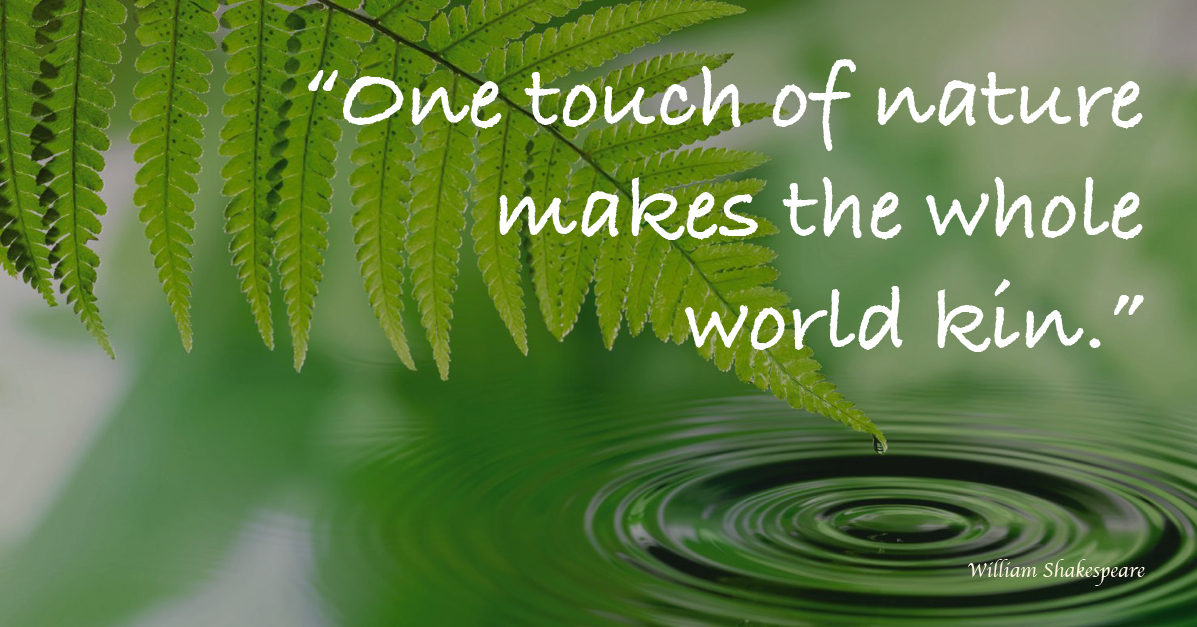


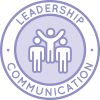
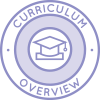
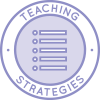
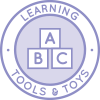
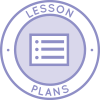
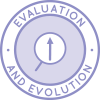
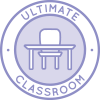
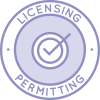









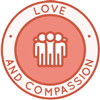


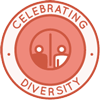
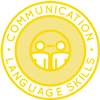
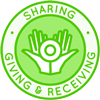

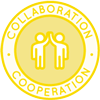
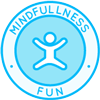
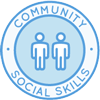
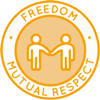
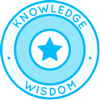
 One Community
One Community



